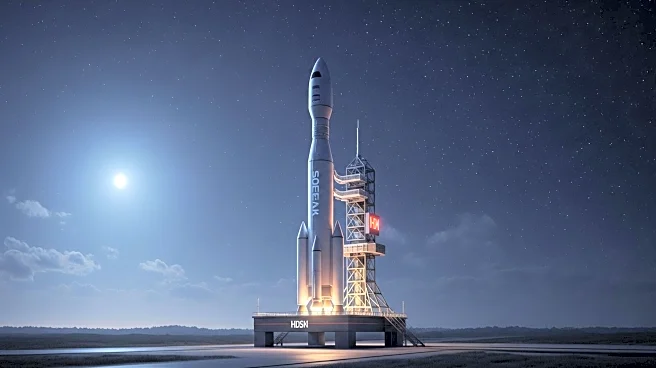What's Happening?
SpaceX is gearing up for the next Starship launch, Flight 11, scheduled for October 13, 2025. This mission will be the final flight of the current Starship 'Version 2' design. The launch aims to test new booster landing techniques and deploy additional Starlink satellites. SpaceX is also conducting experiments by intentionally removing some heat shield tiles to test the structure's durability during reentry. This follows previous tests where the heat shield was partially scarred to assess its robustness. The company is also upgrading its infrastructure, with a second launch pad at Starbase, Texas, and ongoing construction at Kennedy Space Center in Florida.
Why It's Important?
The upcoming Starship launch is crucial for SpaceX's goal of achieving full reusability of its rockets, which could significantly reduce launch costs. The experiments with the heat shield are vital for ensuring the spacecraft's durability and safety during reentry, a key factor for making Starship fully reusable. The infrastructure upgrades at Starbase and Kennedy Space Center are essential for increasing launch capacity and supporting more frequent launches. These developments are part of SpaceX's broader strategy to dominate the commercial space industry and support its ambitious plans for space exploration, including potential missions to Mars.
What's Next?
Following the Flight 11 launch, SpaceX plans to introduce Starship Version 3, which will feature a taller structure and more powerful engines. The company aims to demonstrate full reusability by 2026, including catching both the booster and the ship with the launch tower's arms. SpaceX is also working on expanding its launch facilities to support higher flight rates and more complex missions. The success of these initiatives could further solidify SpaceX's position as a leader in the space industry and pave the way for future space exploration missions.
Beyond the Headlines
The advancements in SpaceX's Starship program could have significant implications for the future of space travel. Achieving full reusability could make space travel more accessible and affordable, potentially opening up new opportunities for commercial space ventures and scientific research. The company's focus on infrastructure development also highlights the growing importance of private sector involvement in space exploration. As SpaceX continues to push the boundaries of what's possible, it could inspire other companies and countries to invest in space technology and innovation.











